QuestionQUESTION: I cannot get my son's 10 gallon hex tank to produce nitrates and start braking down the ammonia and have an acceptable PH level. We have worked closely with a store (multiple people) and all are now really complex. The tank has been set up for 8 months. It had tropical fish, guppies, tetra, neons, catfish and did good at the beginning (survived) but now all have died. Two months ago the ammonia level was 4, nitrates 0, PH was very low, plants dying, suspect overfeeding. 50% water changes were done weekly and the bottom suctioned to get rid of waste and get the ammonia in check, it was reduce to .25 but the nitrates would be 0 even after introducing CYCLE. The PH would register 6.6 after a water change, 7.6 is out of the tap. We have been putting in CYCLE for 2 months to grow health bacteria, by both the new tank and weekly maintenance rates, nothing. Last week started introducing PH buffer and continue with the CYCLE, nothing. Today, PH <6, ammonia on the rise 1, nitrates 0. I cannot introduce any fish until acceptable levels are achieved. The tank was bought at a tag sale. Two questions, what can I do now to get the tank in check and with a very acidic tank how can good bacteria form/grow?
ANSWER: I need more information to answer your question properly, John.
What kind of filter are you using? What make/model #?
Thankyou,
Renee
---------- FOLLOW-UP ----------
QUESTION: The filter is a Marlineland Penguin Model 100 with a bio wheel. The filter has a cartridge and bio wheel. The bio wheel has never been changed but the cartridges were changed at the same time as a water change. I have stopped this practice and have left the same cartridge in for the last month so I would not through out any good bacteria.
ANSWER: Hello John,
The ammonia was high in the tank and killed the fish before. Do you know why? It's your 100 filter. That filter rates for a 10 gallon, but it's more for a 5. It is one of the best brands on the market, though many do much better over-rating for their system.
My advice:
1. Change the filter to a 200 Marineland or a Marineland 200B. That would better suit your aquarium.
2. Use filtered water, rather than tap water. The PH in your tap water is wrong. To keep a tank's PH stable, start with water that is of a good ph and only use that water from now on.
3. I would have to ask you, do you have seashells in the tank? Dead corals? Take them out. They may be a reason for some of the changes taking place.
4. Take all the gravel out, drain the tank. Wash the gravel and replace all the water with R/O water or water from a water fill station in a store. The tank is 10 gallons. That is 2 blue bottles of bottled water. Please purchase and use those and fill it as the water evaporates, from here forward, with the same filtered water, and do the water changes with that same water.
Our local store charges 1.00 for 5 gallons of human quality filtered water. Use that please. The reason? That water is run through what is called a Reverse Osmosis system (R/O) and it has been run through Peat. The PH is perfect.
I also recommend re-starting the tank from fresh. Spotelessly clean the gravel (take it out and wash it, literally), and then replace it. Then fill with the filtered water. Examine all decorations. Make sure something is not disintegrating.
5. Go to the store, Petco specifically does carry this particular product, and buy Biozyme powder. Instead of one pinch per ten gallons, add a tablespoon. This will get your beneficial bacteria going. It will not harm your tank to use more than the recommended doseage. It will, however, begin a cycle.
Ammonia's presence tells me you may have been using a cycling product which began a nitrite cycle, rather than a nitrate cycle. Have you used any cycling products? Liquids, in particular, cause this issue.
A recap:
Start fresh. Clean the tank, as suggested. Put the Biozyme in and then go to the store and buy 2 snails. Mystery Snails are great for starting a fishless cycle. Add them to the tank, and give them about 3 days before the cycle starts. It will last up to a month.
Change water every single weekend while it cycles. In fact, anytime you see ammonia on the test strips, change water out at a rate of 25% until ammonia is under control, even if that means a daily partial water change.
Once ammonia stabelizes, you are on your way...but it will need checked, still, periodically.
I hope my directions are clear, and concise.
Without adding the snails, the tank can't start a cycle properly. I hear "fishless cycle" all the time, but it's only partial. The second you add fish, the 3rd part begins.
To better understand, let's look at a cycle:
What is a cycle? It's a circulatory spectrum of the stages of biological filtration in an aquarium.
What the heck does that mean? It means that without the whole cycle, rather than a part here or there, the tank will not be stabelized.
So, how does it happen?
Stage One: You set up an aquarium with water, plants, gravel and a proper environment including heat and filtration and the cycle isn't started until LIFE is introduced into the water.
The life poops.
The poop goes into the water and gravel and floats around.
At first, it causes ammonia and nitrites. But what happens, is in the water are tiny starts of bacteria. Those bacteria can NOT start without something to eat. What do they eat? Poop.
So the poop in the water helps the bacteria to grow.
Then, the bacteria breeds and makes more beneficial bacteria in the gravel and filters and pads and it begins actually eating and breaking waste down as it circulates throughout the aquarium.
That broken down waste is then able to be filtered and metabolized by the bacteria, filter and plants. The whole system works together to filter out the water and return back cleaner water than what went in.
Without some form of animal eating and then pooping in the tank, the cycle truthfully misses stages.
I hear the trendy "fishless cycle" and I think, oy vay. They are going to get a small recycle once they put in a snail.
Some people throw in something dead and hope bacteria forms. Someone on a salt forum tosses in one dead shrimp. He lets it rot. Good move. Ammonia and nitrates and nitrites get off the charts and rise, but why does it work? Because the first thing it causes is to raise the bacteria and nutrify the system.
After a few days, he takes the dead shrimp out and the cycle has begun. He changes water as ammonia comes up and then he adds a fish. The fish takes over the cycle where the dead shrimp left off.
I'm not saying everyone should go out and put a dead shrimp in their tank, but without waste, there is no cycle. It has nothing to feed on.
So, the snails should put some waste in your tank.
Your duty, afterwards, is to keep that water crystal clean as it cycles. When the ammonia stops coming, and the tank levels off and there is no more readings on the stick, then the cycle is done.
I truly hope this helps you understand cycling better and perhaps that you can get this under control. The PH can be controlled by starting with proper PH water to begin with.
The gype of gravel or substrate you are using may actually be effecting your PH. Have you used store-bought gravel? If so, that isn't the case then.
I certainly hope my advice helps, John. If you need any followup answers, please feel more than free to ask. :)
I hope this has given you some hope. The tank will cycle with the input of a snail or two. I'd add 2. But I'd also feed sparsely.
Happy fish-keeping!
Renee
---------- FOLLOW-UP ----------
QUESTION: Thanks, To answer your questions, no sea shells or dead coral but it was suggested by the store to put it in in the future to raise the PH and the Cycle was a liquid.
Also, looking to purchase a new tank for his birthday present, suggestions or brand? My son has not stop reading or asking questions on fish therefore it is currently not a quick fad therefore we are looking to upgrade and looked at Fluvial at around 60 gallons, canister filter, quality lighting. I would still run freshwater at this time. I previously had a 29 gallon tank 20 years ago for 12 years and never had this type of problem but the equipment was different, I ran an under gravel and Whisper filter, moved it five times and could always get it back into shape even when out of the country by phone.
AnswerHi,
I am particularly fond of the Marineland series of aquariums and the AGA (All Glass Aquariums) systems, but the more affordable of the two is the Marineland systems.
They are both very good quality aquariums.
It is funny about how it was years ago. I felt much like you do about setting them up. I wonder, did my fish just survive cycles? Or, did they just not have one? I honestly don't recall cycles, but we didn't have the same chemicals we do now. Water may have already had nutrificial bacteria in it, and we were probably drinking it, lol. Ew.
I don't want to know what was in the water when I was younger. I already know what is in it now and it's scary!
:)PH - The seashells aren't recommended by me, right now, (but as we explore this more, that could change) because they falsely raise PH and so if you are using them, then we aren't tackling the problem, but rather circumventing it with an easy fix. Also, they do harden the water. Checking on what kind of fish you have and their specifications is first, very important, before using them. Should the fish's requirements coincide, then yes, you can try shells, but then again...you're still not going to know why the PH refuses to rise.
It could be sulphur in the water system causing it to come out very low, or in the soil or substrate, but I am assuming you purchased your gravel, so that probably is not the issue.
Now that I think about it...just check your decorations to be certain nothing contains a sulphur property or a rock that lowers ph. Ph lowering items would include homemade gravels, sands, substrate, soils, lava rocks sometimes contain sulphuric properties as they dissipate, and
Renee

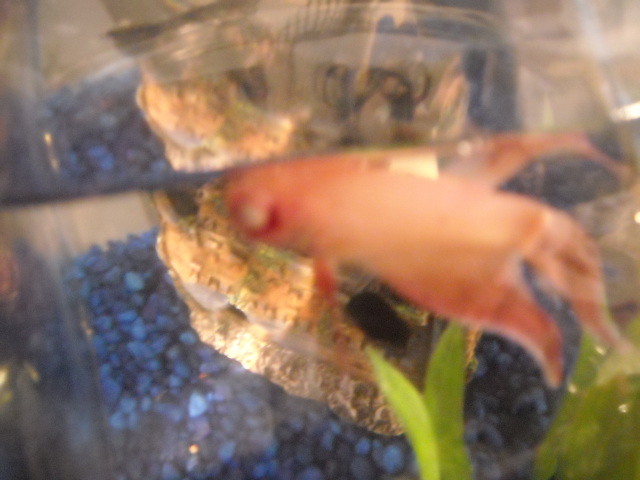 Popeye Betta
Question
popeye
My betta fish started showing si
Popeye Betta
Question
popeye
My betta fish started showing si
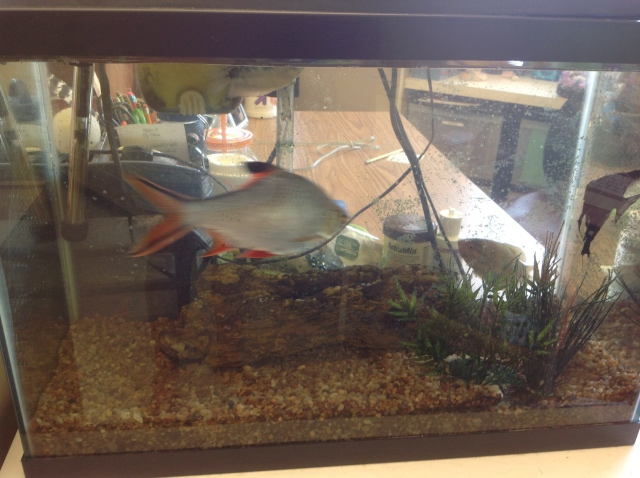 Fresh Water Fish
Question
My Fish Tank
Hi Elizabeth,
I would rea
Fresh Water Fish
Question
My Fish Tank
Hi Elizabeth,
I would rea
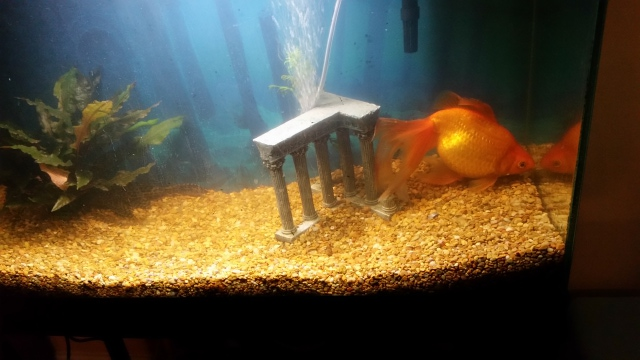 White spots and water issues
Question
Goldfish
I have 2 fish, 1 large fancy g
White spots and water issues
Question
Goldfish
I have 2 fish, 1 large fancy g
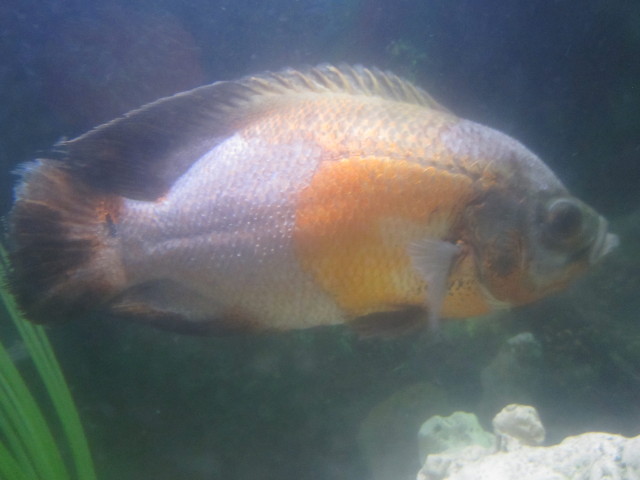 sick tiger oscar
Questionsick tiger oscar
QUESTION: Hi! I have a
sick tiger oscar
Questionsick tiger oscar
QUESTION: Hi! I have a
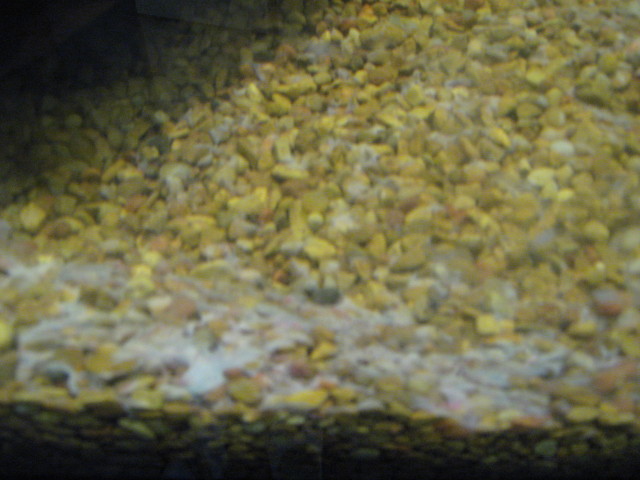 white cobwebs in my tank
Question
cobwebs
Hi!
Im a novice fish owner. weve had o
white cobwebs in my tank
Question
cobwebs
Hi!
Im a novice fish owner. weve had o